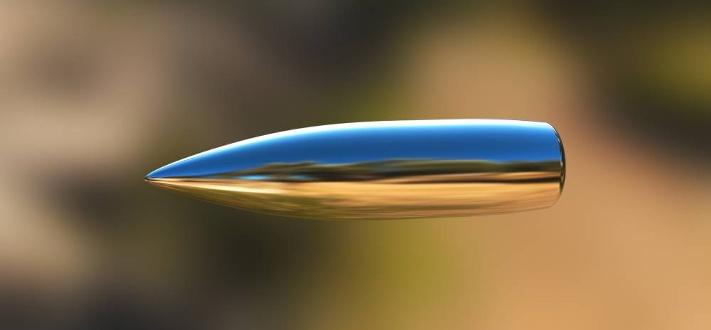Compared to traditional and conventional manufacturing methods, 3D printing offers five main benefits for ammunition production:
- Broader range of materials
- Cost efficiency
- Time reduction
- Precision and accuracy
- Automated manufacturing processes
Because of the size, the unique round shape and explosiveness, the structure of the bullet is divided into two core parts: the outer layer (copper jacket) and lead core. The outer layer is shaped from a thin sheet of copper and is used to cover and protect the lead core which then explodes at the target. With traditional manufacturing methods, the lead core and outer layer have to be created separately then merged together in the final process.
When the outer layer is coated onto the lead core, it sometimes creates certain holes or spaces that could impact the performance of bullets. Since a machine delivers the copper jacket to the lead core and manually covers it, it often fails to completely and tightly cover the lead core.
 The 3D printing-based bullet manufacturing method created and tested by the Russian Foundation for Advanced Research Projects in the Defense Industry (FPI) and defense research center JSC Tsniitochmash creates bullets layer by layer, leaving no space or vulnerability between the outer coating and lead core. The FPI stated that the precision of their 3D printing method allowed the bullet to perform similarly to traditionally manufactured ammunition.
The 3D printing-based bullet manufacturing method created and tested by the Russian Foundation for Advanced Research Projects in the Defense Industry (FPI) and defense research center JSC Tsniitochmash creates bullets layer by layer, leaving no space or vulnerability between the outer coating and lead core. The FPI stated that the precision of their 3D printing method allowed the bullet to perform similarly to traditionally manufactured ammunition.
“Foundation for Advanced Studies and JSC “TSNIITOCHMASH” successfully conducted tests of an experimental batch of bullets that were created using layered laser melting technology (PLC-bullet). Layering technology today becomes a new paradigm for high-tech industry: it is a fast production method with accelerated development of components, parts and structures. Laser fusion is the quickest way to bring an idea of a product to its realization,” stated the FPI.
If the FPI continues to develop its 3D printing method and manages to implement it in a commercial scale, it could be presented as a solution to the world’s ammunition issues and inefficiency of most ammunition production mechanisms. The FPI will soon be able to test its method on a wider range of products, including guns, tanks, and aircraft parts, among many others. Discuss in the 3D Printed Bullets forum at 3DPB.com.
[Source: FPI]Subscribe to Our Email Newsletter
Stay up-to-date on all the latest news from the 3D printing industry and receive information and offers from third party vendors.
Print Services
Upload your 3D Models and get them printed quickly and efficiently.
You May Also Like
ORNL Moves Forward with 3D Printed Steel Nuclear Parts
The nuclear industry has been working with additive for many years: Only recently have we been finding out about all of the components that are currently being used. The work...
Skuld Sells First Lightning Metal Machine to University of Tennessee
Skuld LLC has sold a Lightning Metal machine to the University of Tennessee at Knoxville. Skuld’s Additive Manufacturing Evaporative Casting (AMEC) technique is potentially a super low-cost method for making...
Juggerbot 3D and ORNL Collaborate on 3D Printing of Thermosets and Thermoplastics
Youngstown-based JuggerBot 3D makes medium-format pellet printers. The firm is also doing some exciting defense work with a combination of Direct Ink Write, thermosets and pellet printing, and received a...
3D Printing News Briefs, June 11, 2025: Sustainability, Automotive Tooling, & More
We’re starting with sustainability news in today’s 3D Printing News Briefs, as EOS has strengthened its commitment on climate responsibility, and Zestep is making 3D printing filament out of eyewear...

































